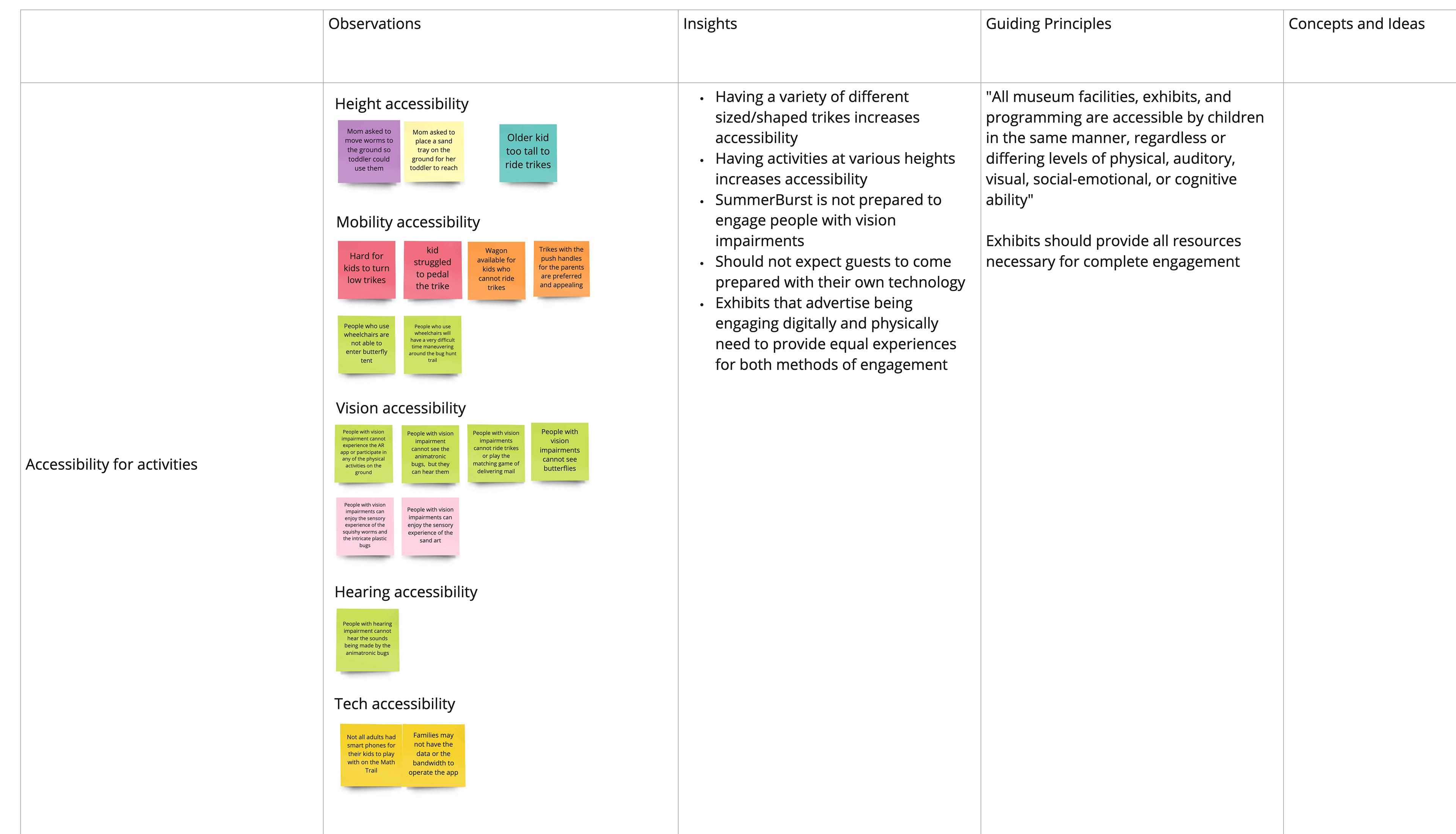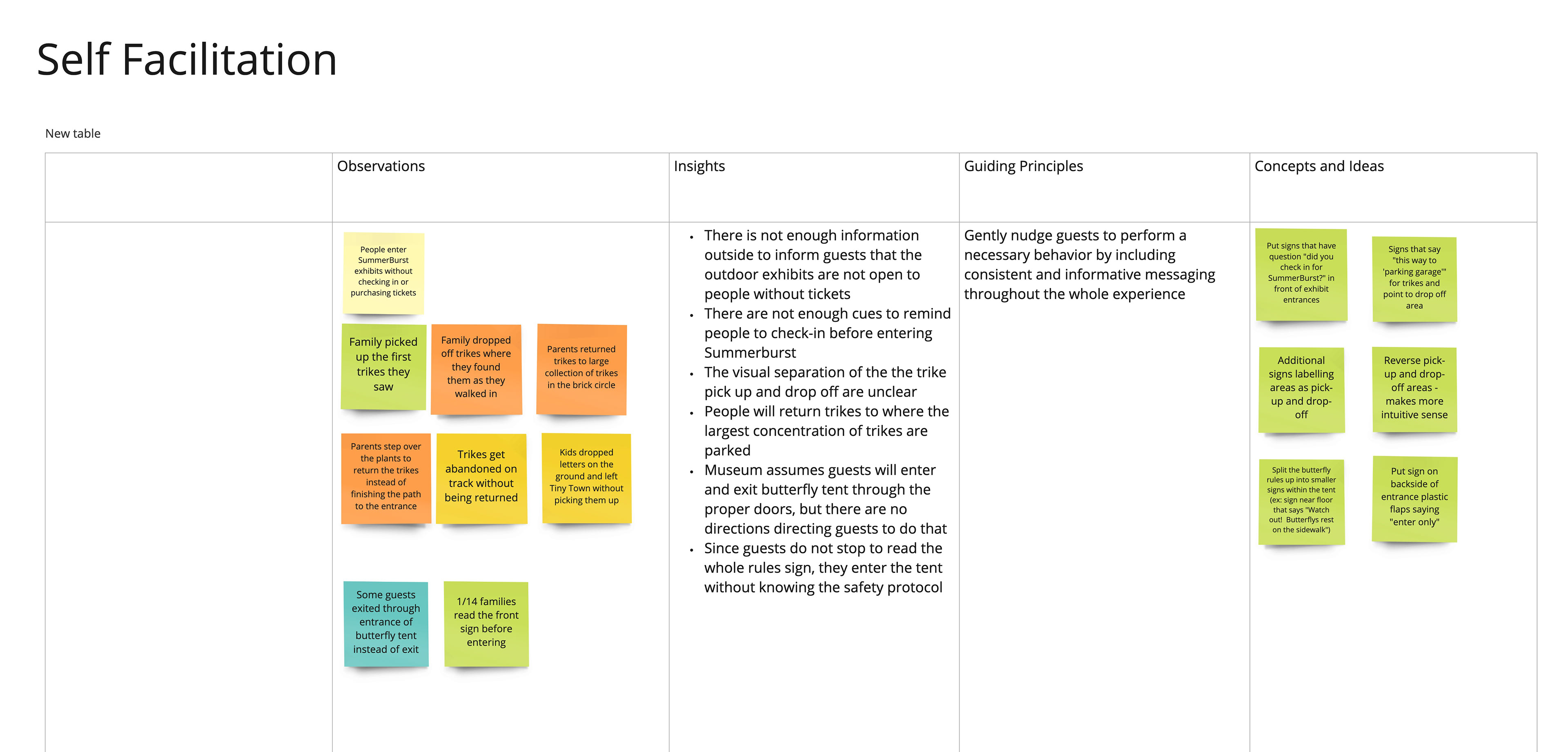Goal of the project: to evaluate the success of the museum’s new outdoor experience called SummerBurst, and help provide insight into whether the experience should be continued post-COVID-19 pandemic.
Time frame: 8 weeks
Partner: Amy Zasadzinski
My role: researcher, documenter, insights generator, report creator
Final deliverable: We put together and presented a design report to the CEO and the management team of Kohl Children's Museum.
(Note: before starting this project, Amy and I had just completed our foundation semester at the Institute of Design at IIT. At the time of this internship we had not taken classes that taught us the principles and methodologies for conducting user research yet. However, despite the pandemic and not having enough information on our hands, we were able to make the best use of the tools we had to complete and deliver the final presentation to the CEO and the management team at Kohl Children's Museum successfully. They were very happy with our deliverables and shared this final presentation with their Education Committee and Board of Directors.)
Our Process:
Discover → Define → Refine → Deliver
Discover: Gather observations, send out pre-visit surveys and post-visit surveys
Define: Analysis and synthesis, find patterns and connect dots
Refine: Solutions exploration - develop best practices and create design guiding principles
Deliver: Present our findings and recommendations to the Kohl Children's Museum CEO and management team.
D i s c o v e r
SummerBurst had 5 main exhibits: Art Studio, Bug Hunt, Butterfly Tent, Math Trail, and Tiny Town Trike Track. For the first couple weeks when we were on site, Amy and I walked through all the exhibits trying to understand to get a general understanding of how the exhibits worked as a whole. Everything from the experience of booking tickets and making reservations online to how the wayfinding system affects the visitor flow. That helped us develop the pre- and post-surveys we sent out to the visitors and helped us come up with some hypotheses and areas we wanted to focus on while doing more in-depth observations for each exhibit.
Analyzing online booking and reservation experience
Gathering observational data:
Testing out the AR experience and taking notes:
Clustering general observations (on Miro board)
Re-clustering detailed observations of Tiny Town Trike Track:
D e f i n e
Through the process of clustering and re-clustering our research multiple times and in several ways, we categorized these observations into 3 main patterns that affected the guests' experience:
Wayfinding, Facilitation, and Accessibility.
From that, we re-clustered observations again into these 3 main categories and generated our insights and guiding principles. Examples shown below. (Top left: Accessibility; Top right: Facilitation; Bottom: Wayfinding)



R e f i n e
In the end, we came up with a list of guiding principles for the 3 main categories of Wayfinding, Facilitation, and Accessibility. This list not only reinforced the methodologies that the museum was already doing to create fun and educational spaces for children, but it could also be used as a reference for when the museum wants to create future exhibits.
D e l i v e r
Amy and I presented our summer project findings with the Kohl Children's Museum management team, followed up with discussions and Q&A's.
Learnings and key takeaways from this project:
We completed many many more iterations of our synthesis than we expected, so it was good practice for us to start using/developing a framework, then adjusting as needed.
It is very important to be flexible with our plan, things come up that are out of our control.
It is helpful to both create insights that can be used outside of this specific project, but also report small/specific findings about the project as well.
Having a faculty advisor would be very helpful, especially for first year foundation students.
I have taken several classes that would have been very helpful for this project and internship since it ended last summer. If I were to do this project again, I would've first created a research protocol with my partner. I would've known how to approach this project using the principles and methods of user research more systematically.
Interested in seeing the final presentation? Click the button below.